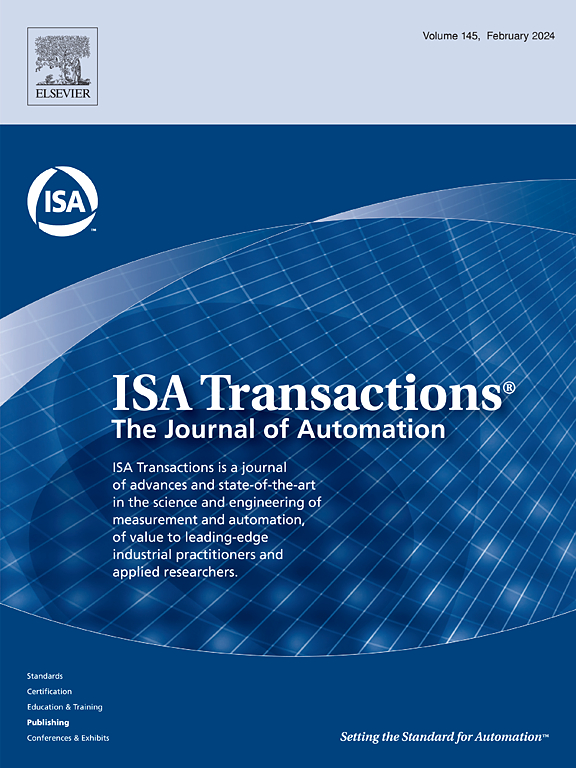Cascade alarm systems: A study on singular value analysis
IF 6.5
2区 计算机科学
Q1 AUTOMATION & CONTROL SYSTEMS
引用次数: 0
Abstract
This paper introduces a novel alarm system designed for use with both Independent and Identically Distributed (IID) and non-IID variables. The proposed algorithm, termed the Cascade Alarm System (CAS), utilizes the largest singular value of the signal as the basis for fault detection, employing k alarm subsystems. The greatest singular values extracted from the Lagged Covariance Matrix (LCM) of a sliding window constitute the output of the first alarm subsystem. The CAS offers two primary advantages. First, each subsystem independently generates its own alarm signal, resulting in a more flexible multilevel architecture. Second, the multilevel structure, founded on singular value decomposition (SVD), exhibits a filtering property that enhances its resilience to noise and inaccuracies. The maximum singular value effectively captures the essential information of the signal, ensuring that the filtering capabilities of the proposed method do not significantly compromise the performance of the alarm system or the integrity of critical signal information. The experimental results from the implementation of the proposed alarm system under various fault conditions demonstrate satisfactory performance. Additionally, the performance of the Cascade Alarm System has been compared with leading contemporary alarm system design methodologies, including median, moving average filters, delay timers, Cumulative Sum Control Chart (CUSUM), and serial method.
串级报警系统:奇异值分析的研究。
本文介绍了一种适用于独立同分布(IID)和非独立同分布(IID)变量的报警系统。所提出的算法,称为级联报警系统(CAS),利用信号的最大奇异值作为故障检测的基础,采用k个报警子系统。从滑动窗口的滞后协方差矩阵(LCM)中提取的最大奇异值构成第一报警子系统的输出。CAS提供了两个主要优势。首先,每个子系统独立产生自己的报警信号,使多层体系结构更加灵活。其次,基于奇异值分解(SVD)的多层结构显示出一种滤波特性,增强了其对噪声和不准确的恢复能力。最大奇异值有效地捕获了信号的基本信息,确保了所提方法的滤波能力不会显著影响报警系统的性能或关键信号信息的完整性。在各种故障条件下的实验结果表明,该报警系统具有良好的性能。此外,级联报警系统的性能已与领先的当代报警系统设计方法进行了比较,包括中值,移动平均滤波器,延迟计时器,累积和控制图(CUSUM)和串行方法。
本文章由计算机程序翻译,如有差异,请以英文原文为准。
求助全文
约1分钟内获得全文
求助全文
来源期刊

ISA transactions
工程技术-工程:综合
CiteScore
11.70
自引率
12.30%
发文量
824
审稿时长
4.4 months
期刊介绍:
ISA Transactions serves as a platform for showcasing advancements in measurement and automation, catering to both industrial practitioners and applied researchers. It covers a wide array of topics within measurement, including sensors, signal processing, data analysis, and fault detection, supported by techniques such as artificial intelligence and communication systems. Automation topics encompass control strategies, modelling, system reliability, and maintenance, alongside optimization and human-machine interaction. The journal targets research and development professionals in control systems, process instrumentation, and automation from academia and industry.
 求助内容:
求助内容: 应助结果提醒方式:
应助结果提醒方式:


